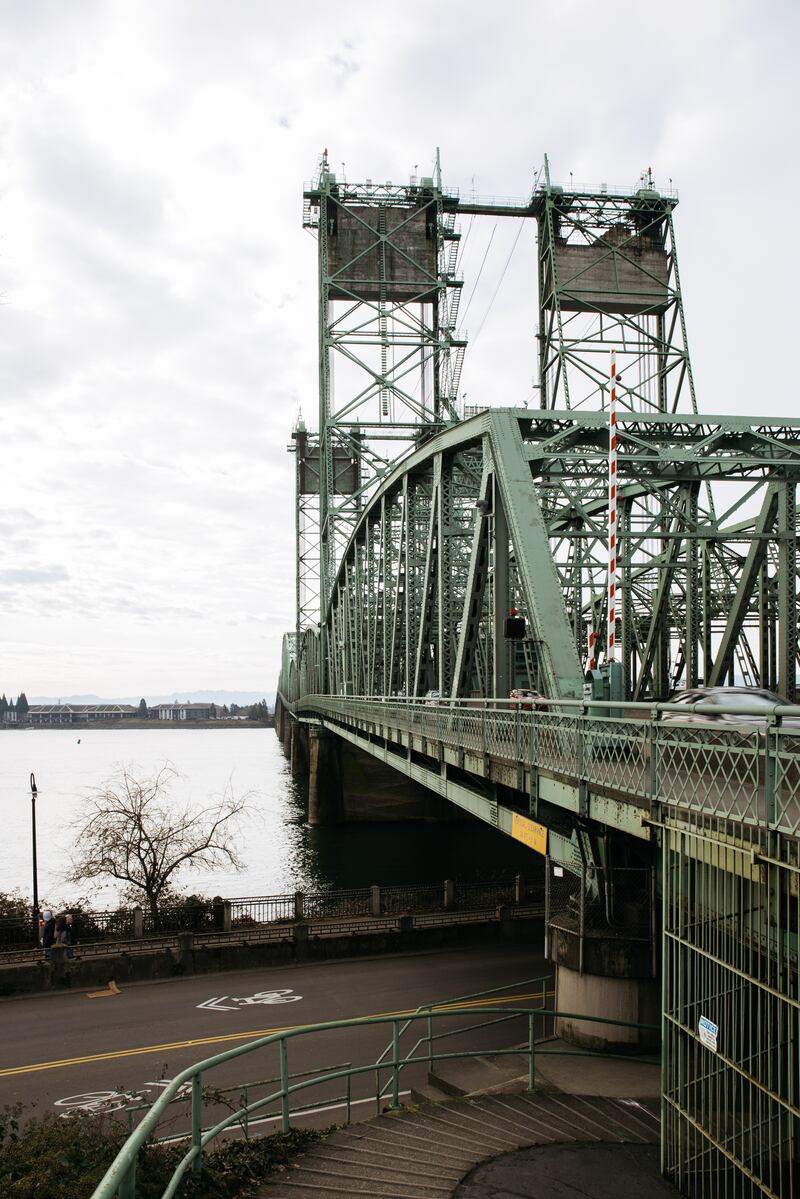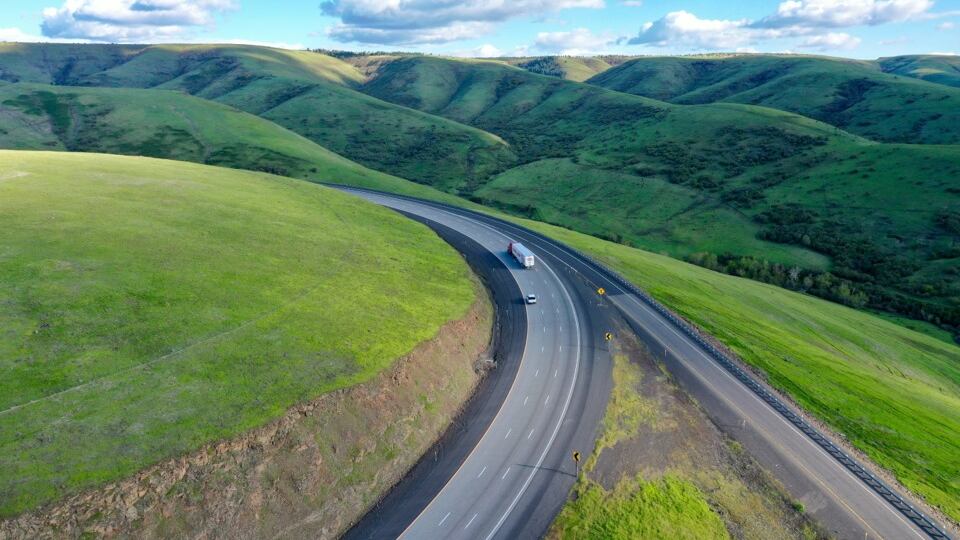A road grade of 3.99% is required to build a new Interstate 5 bridge that stands 115 feet above the Columbia River, according to estimates produced by Oregon and Washington officials in 2012. Architects of the Interstate Bridge Replacement program confirmed to WW last week that they’re considering a bridge roughly that steep.
That angle takes on new consequence following a June 17 initial determination by the U.S. Coast Guard that the Interstate 5 bridge must be at least 178 feet tall—or include a drawbridge—in order to allow ships to pass under it.
The Coast Guard’s demand for greater height adds difficulty to the already daunting prospect of designing a bridge that satisfies everyone who crosses it.
“We are threading a very fine needle to meet all of the needs here,” says Greg Johnson, the IBR program administrator.
A drawbridge means periodic traffic jams as vessels pass. But a taller bridge means either a longer or steeper bridge.
The Oregon Department of Transportation’s highway design manual prescribes a maximum 3% grade for most interstate freeways on level terrain, with an allowance that in “extreme” circumstances they can go to 4%. (A 4% grade means the road gains 4 feet of elevation for every 100 feet of length.)
So steeper is out. That means longer—with a bridge rising farther from the banks of the Columbia. Retired engineer and bridge critic Bob Ortblad says to stay at a 4% grade, the bridge span would be 2 miles long, starting near North Marine Drive in Portland and landing near Mill Plain Boulevard in Vancouver.
Indeed, critics of IBR say the Coast Guard letter confirms their opinion of a tall bridge: It’s an arrogant folly. “A bridge with a 4% grade creates a safety hazard (with slow trucks climbing the steep grade), impaired performance of light rail and buses,” writes Joe Cortright in an email to WW. “The steeper grade and higher clearance also burn more fuel (as vehicles have to climb a big hill) and also leads to higher pollution. The very high clearance makes the bridge much worse for bikes and pedestrians, who have to climb the grade under their own power.”
Johnson says IBR representatives will seek a variance from the Coast Guard—in part to keep the bridge from being too steep. “It is something that we are concerned about every day,” he says. “We know that if grades get too steep, people will not use it for active transportation. So we are looking to make sure that our grades don’t exceed grades that are comfortable for folks who are biking, walking or rolling.”
We wondered how a 4% grade would compare to other sharp climbs on interstate highways. So we consulted the guidebook used by people most worried about road grades: truckers.
The Kansas-based publishers of Mountain Directory West and Mountain Directory East say they consulted with transportation departments in 22 states to identify the steepest highway grades in the nation. Here’s how the proposed Interstate Bridge Replacement compares to some of the nation’s most white-knuckle drives.

Eisenhower Tunnel
Interstate 70
West of Georgetown, Colo.
7% grade
For 6 miles
Notable fact: Bores under the Continental Divide.
Cabbage Hill
Interstate 84
East of Pendleton, Ore.
6% grade
For 6 miles
Notable fact: Mountain Directory West relays word from an Oregon state trooper that one motor home a day catches fire trying to climb Cabbage Hill in the summer.
Monteagle Mountain
Interstate 24
East of Monteagle, Tenn.
6% grade
For 4 miles
Notable fact: “The Monteagle grade” gets name-checked in the opening song of Smokey and the Bandit.
Donner Pass
Interstate 80
West of Truckee, Calif.
5% grade
For 4 miles
Notable fact: Cannibalism.
Sunshine Skyway Bridge
Interstate 275
St. Petersburg, Fla.
4% grade
For portions of 4 miles
Notable fact: In 1980, a freighter collided with a bridge support pillar, killing 35 as a Greyhound bus and several cars plunged into Tampa Bay.
Interstate Bridge Replacement (proposed)
Interstate 5
Portland to Vancouver
3.5%-4% grade
For less than 2 miles
Notable fact: Oregon and Washington have been trying to replace the old I-5 bridge since 2005.
Correction: This story initially misidentified the program manager for the Interstate Bridge Replacement. He is Greg Johnson, not Gary Johnson.

